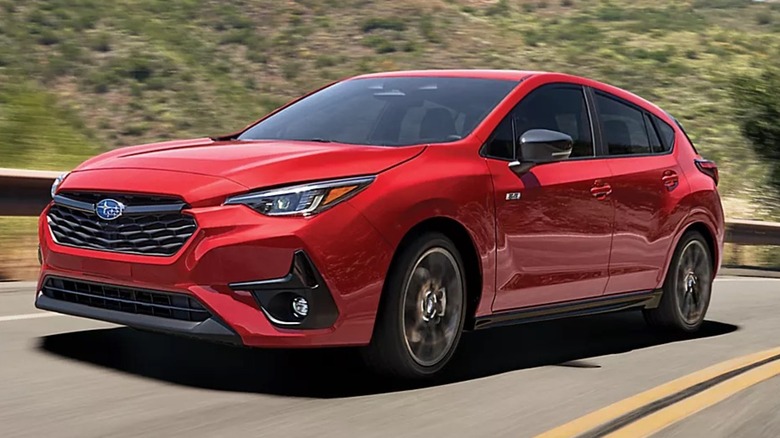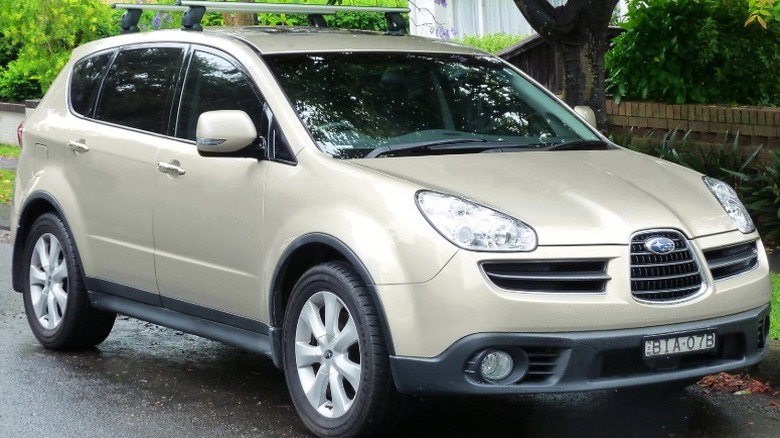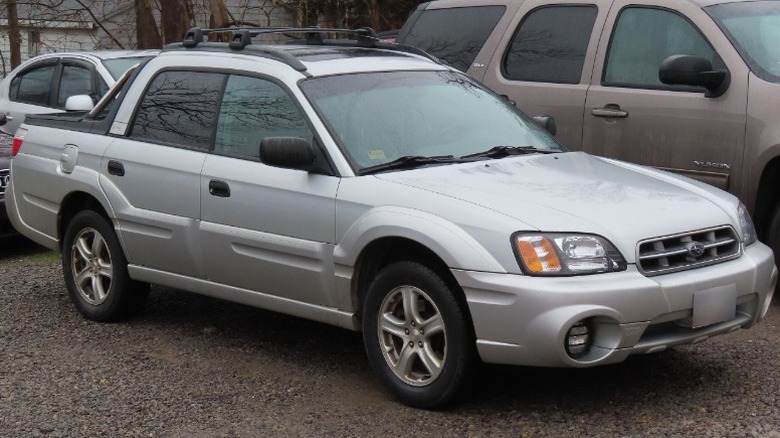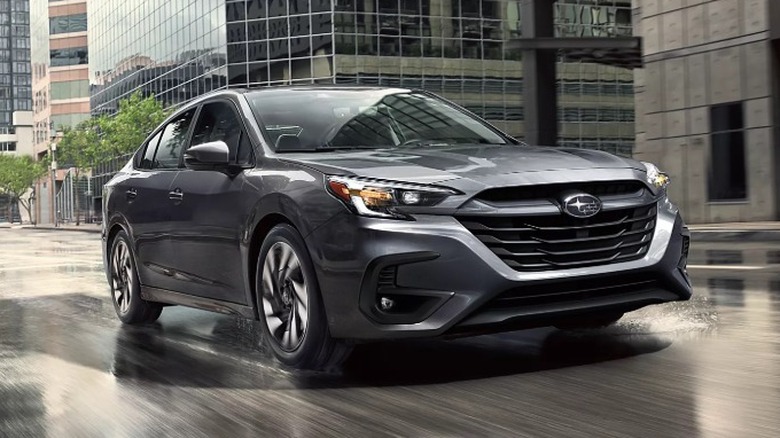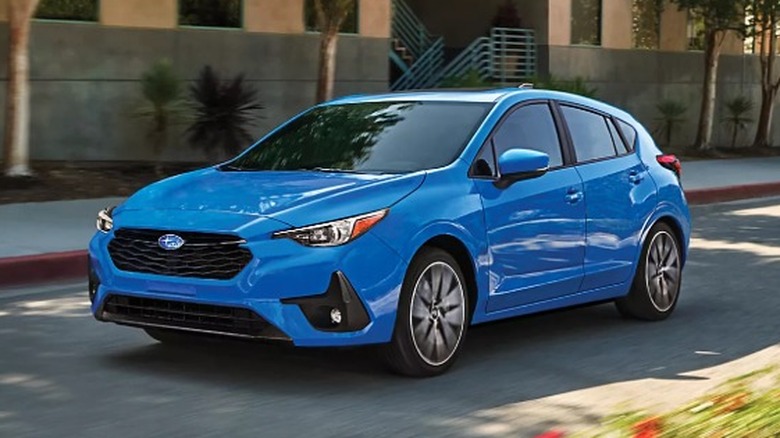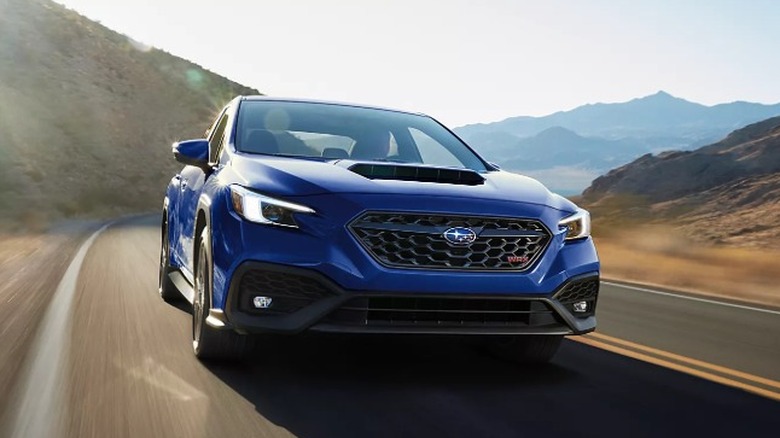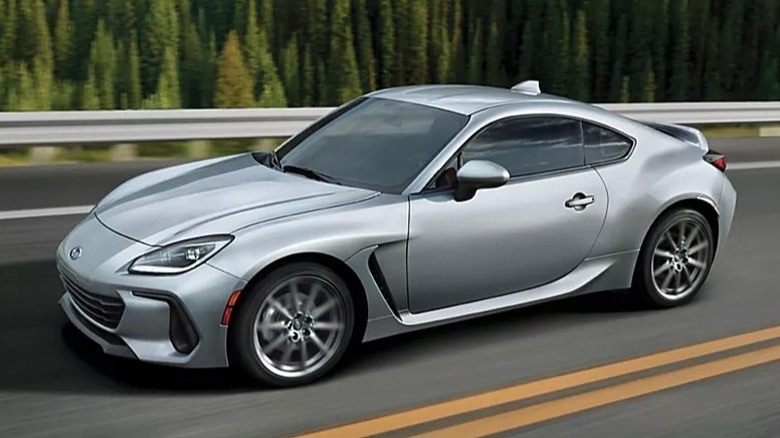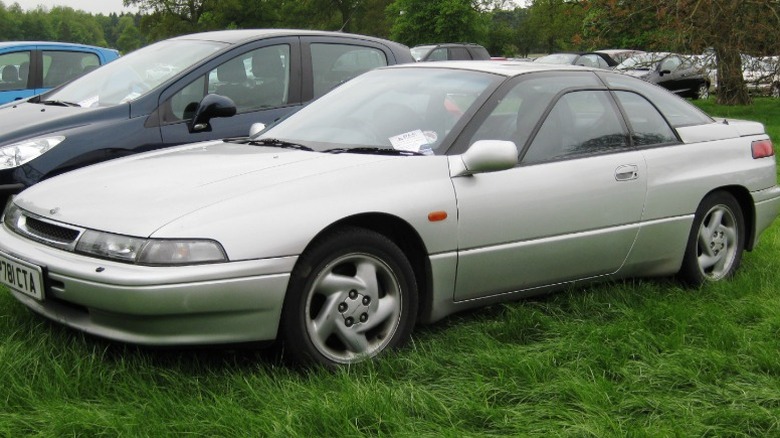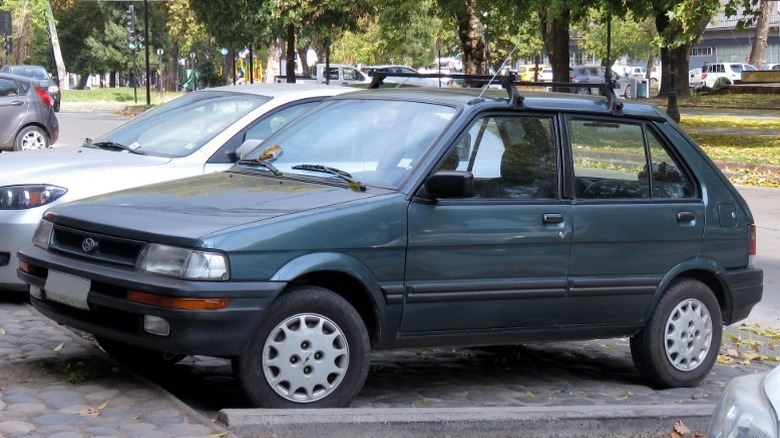8 Subaru Models With Terrible Resale Value
Buying a Subaru usually feels like a safe bet. The brand is reliable, practical, and ready for anything the roads throw at it. Its vehicles typically offer a steady cruise, whether you're on the city streets or on muddy trails. But if you're thinking long-term and resale value matters to you, not every Subaru is a winner. Some models lose value faster than you want. While Subaru has its cult following, a few of its vehicles have quietly earned a reputation for disappointing resale returns.
Subaru has done plenty right. It is far from the worst car brand for depreciation. Its flagship models, such as the Outback and Forester, are testament to this. They have practically become household names thanks to their ability to retain value in the aftermarkets. But, the same can't be said for some of its other models. Some Subarus have not aged well. They came out underpowered, overpriced, or simply too weird for the mainstream market. A few were ahead of their time. But most were just not good enough.
Whatever the reason, resale value tells a story. It could be one of the discontinued nameplates, underwhelming hybrids, or even overly expensive turbocharged trims. What's certain is that it's not the kind of story Subaru likes to put in ads. And, when the dust settles, used car buyers tend to stay away from them, driving resale values into the ground. With that in mind, here are eight Subaru models with terrible resale values.
Subaru Tribeca
Starting with the Subaru Tribeca, this vehicle wasn't coveted during its production stint, and still isn't now. The Tribeca was produced from 2005 to 2014. It was Subaru's first entry into the midsize SUV segment, and we laud it for its intention. However, intention can only take you so far. The Tribeca struggled in the market, leading to poor resale values. The Tribeca was initially launched as the B9. But its front-end design was criticized as being unconventional. In response to this, Subaru dropped the B9 tag and redesigned the grille in 2008. But this did little to sway the markets in its favor. It went down in history as one of the most boring Subaru models ever designed.
The last Tribeca has a 3.6-liter six-cylinder engine. It produces 256 horsepower. Its transmission is a 5-speed automatic that pairs well with the symmetrical all wheel drive system. Though this setup provided adequate performance, fuel economy was subpar at 16 mpg in the city and 21 mpg on the highway. Still, the engine and performance were not the reason why Subaru discontinued the Tribeca SUV. Instead, it came down to its size. Edmunds estimates the vehicle's price between $6,223 and $8,530. Kelley Blue Book reports that it has depreciated $3,098 or 29% over the past three years, bringing its current resale value to approximately $7,516.
Subaru Baja
Subaru's Baja is an icon of the brand and a memorable part of automobile history. It ran the production line from 2003 up until 2006. In this time, it delivered four model years of utility and compactness. Subaru made this vehicle with one goal in mind. That goal was to merge the comfort and size of a car with the utility of a pickup truck. It was a bold idea, and the Baja is nothing if not bold. It was built on the Outback's platform to feature a four-door cabin and a small open bed. Despite this innovation in design and performance, the Baja struggled in the markets. Subaru appeared unwilling to keep making losses on the product. This was one of several reasons why Subaru discontinued the Baja pickup truck.
Performance-wise, the 2006 Baja came with a 2.5-liter, four-cylinder engine. This delivered 165 horsepower and 166 lb-ft of torque. It had a turbocharged engine version that produced 210 horsepower and 235 lb-ft of torque. The vehicle came standard with a five-speed manual transmission. However, there was an optional four-speed automatic. The turbo trim produced better acceleration. But it couldn't match the towing capacity of traditional pickups. As such, it has fallen far from its starting MSRP of $23,920. While it has acquired a unique following, its short production spell and quirky design did not yield strong demand. Its value today is pegged between $2,558 and $ 3,953 according to Edmunds.
Subaru Legacy
It really sucks to have put the Subaru Legacy on this list, but we must. The midsize sedan is one of the brand's better vehicles. It has forged a name for itself in its segment thanks to its reliability. But it hasn't been all rosy for this vehicle. On the aftermarkets, it struggles a bit. A lot of its struggles can be linked to the increasingly dominating SUVs and crossovers. The growing preference for SUVs has led to declining sedan sales. This negatively impacts models like the Legacy. Also, Subaru is pulling the plug on the Legacy after 2025. So you can expect resale values to take a further hit. So, through no real fault of its own, the Legacy's depreciation remains a problem.
The Subaru Legacy is a reliable machine. It offers modest performance with a 2.5-liter four-cylinder engine on its 2025 base models. This engine is capable of generating 182 horsepower easily. It also has a 2.4-liter option that increases that number to 260 horsepower. These pair well with the continuously variable automatic transmission. The vehicle's performance throughout its production stint can best be described as modest. Fuel economy is outstanding. CarEdge reports that the Legacy will depreciate about 44% in 5 years, plunging resale value to as little as $20,154. This presents a significant drop from its current MSRP of up to $41,280.
Subaru Impreza
The Subaru Impreza is a great vehicle if you're working on a budget. Its allure resides in budget-conscious drivers looking to get the all-wheel drive experience. But when it comes to resale value, the Impreza does not impress. It fails to hold its ground as well as some might expect. Its affordability and performance are not enough to set it apart from the competition of the Honda Civic and the Mazda 3. Those vehicles offer a better driving experience for the price point. They beat the Impreza on the aftermarkets, especially. The vehicle has been produced since 1992. But none of its models have topped the first generation when it comes to reliability. This was the finding when we ranked every generation of the Subaru Impreza.
The 2025 model is the latest of the vehicle's sixth generation. Unfortunately, it also continued a pattern of the model's meager performance, which has become an unwanted trademark of the model. The 2025 Impreza features an underwhelming 2.0-liter flat-four engine with 145 lb-ft of torque and 152 horsepower. There is a 2.5-liter four-cylinder boxer engine variant available on its RS trim. But even that merely propels the car at 182 horsepower and 178 lb-ft of torque. CarEdge estimates that the Impreza will depreciate at about 32% in half a decade to a resale value of $19,311. Less than ideal for a vehicle with a current MSRP of up to $30,420.
Subaru WRX
It's difficult to speak of the Impreza without mentioning the WRX in the same breath. They are close relatives that share the same platform and design. WRX stands for World Rally Experimental and initially debuted as a trim for the Impreza. In 2015, the brand decided to give it its independence. It became a standalone that has performed fairly on the markets. The model has built a strong reputation. Fans love it for its sporty, rally-inspired concept. But they are less thrilled when it comes to resale value. Some of this was beyond the WRX's control. Performance cars suffer from the assumption that they demand higher maintenance. This deters potential buyers who worry about long-term maintenance. The WRX is no different, despite Subaru's solid reputation for low maintenance.
Performance is what makes the Subaru WRX different from the Impreza. The 2025 model comes equipped with a 2.4-liter flat-four turbocharged engine. It improves drastically on the Impreza by delivering 271 horsepower and 258 lb-ft of torque. It has the option of a six-speed manual transmission or a continuously variable automatic transmission. Both support Subaru's iconic all wheel drive system. Adding fuel to the high-maintenance assumption is its EPA-rated fuel economy. This is lackluster at 22 mpg combined and contributes to its poor resale value. For instance, KBB reports that the 2022 WRX has depreciated 36% in the last 3 years.
Subaru BRZ
Speaking of Subaru sports cars, the BRZ is another model that takes a hit on the aftermarkets due to its class. The BRZ is the product of the industry-defining collaboration between Subaru and Toyota. It launched in 2012 and has stuck around ever since. Its handling, performance, and affordability are qualities it is often associated with. Sadly, these do not have as much of an influence on determining its resale value. The alternatives to the Subaru BRZ outperform it on this metric. According to CarEdge, the BRZ experiences a depreciation of approximately 39% over five years. This results in a resale value of around $22,193. The competing Toyota GR86 records the exact same depreciation percentage. But the Honda Civic Si comes in lower at 34%.
The depreciation rate of the BRZ is slightly better than the average for sports cars. In fact, it is far better than that of the Ford Mustang Ecoboost, which depreciates by approximately 55% over five years. KBB reports that a 2023 BRZ has depreciated by 22% over the last two years. This is a $7,113 loss that brings its current resale value to $24,072. The BRZ's depreciation is influenced by several factors, one of which is the car's limited power output. The original BRZ had a 2.0-liter engine at its core. It produced 200 horsepower and 151 lb-ft of torque, which is considered underwhelming for a sports car. Now, its 2025 model delivers just 228 horsepower and 184 lb-ft of torque.
Subaru SVX
We're sticking with performance cars, this time with a blast from the past. The SVX is dubbed Subaru's forgotten performance car. This icon debuted in 1991 with the 1992 model year. It enjoyed a brief production stint until 1997. It sold only 14,000 units during this spell. That and the insane MSRP of nearly $36,000 contributed to why the Subaru SVX was a complete flop. Even in its death, it still performs poorly on the markets. If you were one of the unlucky few to purchase this vehicle, you'll likely have experienced some difficulty trading it. The SVX's maintenance costs and the complexity of its design may have deterred potential buyers. This wasn't helped by its limited production.
However, the Subaru SVX is an innovative and distinctive model. The brainchild of designer Giorgetto Giugiaro, the SVX's window-within-a-window design made it recognisable anywhere. It also packed some thrilling features under its hood. Somehow, the first SVX produced a higher performance than the BRZ. Thanks to its DOHC 24-valve flat-6 engine, it could generate 230 horsepower and 224 lb-ft of torque. This is an improvement on even the 2025 BRZ. It had a 4-speed automatic transmission, which meant it could accelerate to 60 mph in under 8 seconds. KBB reports that pricing for a 1997 Subaru SVX should start at about $3,500. Edmunds' price estimate ranges between $1,760 and $2,752.
Subaru Justy
Rounding off the list is another vintage Subaru that few remember. The Subaru Justy was a subcompact hatchback produced from 1984 to 1994. It marked Subaru's entry into the subcompact car market. It was as practical as it was affordable, providing efficiency to owners. However, it did not age gracefully. The Justy struggled to maintain its value over time, resulting in poor resale performance.
Still, the Justy is a historic vehicle. Its 1987 model featured the world's first electro-continuously variable transmission (ECVT). The Justy came in different shapes and sizes depending on your region. It is undoubtedly an icon of its time and has evolved into some modern cars. You might not know that many different cars have the Subaru Justy name.
The Justy featured one of the most reliable Subaru engines ever made. This was the EF12 engine. It was based on Suzuki's G10 engine, which was also notably present in the Pontiac Firefly. The engine was a straight-three, four-stroke type with a single overhead camshaft, producing 73 horsepower. But with the addition of a turbo, it could rise to 200 horsepower. The Subaru Justy appealed to a limited target market. It focused on affordable transportation at the expense of thrilling features. Its small size and minimal features made it practical but less attractive to a broader market. This was so during and after its decade-long production stint. Edmunds estimates that a 1991 Subaru Justy will cost between $1,386 – $2,170.
